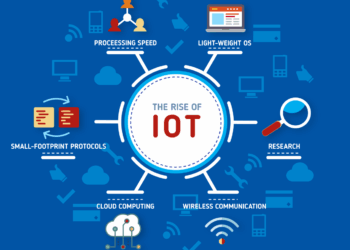The world of media has undergone a massive transformation over the past two decades. What once were legacy print publications and television broadcasters have now become hybrid platforms striving to keep pace with digital trends. Traditional media outlets, such as newspapers, magazines, and television stations, are facing unprecedented challenges. These challenges stem from the changing behaviors of audiences, who increasingly consume content online and demand real-time updates across multiple devices.
This article delves into the shift from traditional to digital media, examining how media houses adapt their models, incorporate new technologies, reshape their revenue streams, and implement SEO practices to survive and thrive in the ever-competitive digital landscape.
A. The Decline of Traditional Media Formats
Once the backbone of global news and entertainment, traditional media formats such as print newspapers, broadcast TV, and magazines are experiencing a dramatic decline. This erosion is due to several factors:
1. Changing Consumer Habits
With the proliferation of smartphones, tablets, and high-speed internet, modern consumers expect on-demand access to information. Daily newspaper deliveries and scheduled TV programming no longer align with the fast-paced lifestyles of today’s audiences.
2. Digital-First Generation
Younger demographics, particularly millennials and Gen Z, grew up with the internet and prefer digital platforms for consuming news and entertainment. These generations rely heavily on social media, blogs, and video-sharing platforms to stay informed.
3. Advertising Revenue Shift
Advertisers now favor digital channels, which offer targeted marketing, performance metrics, and greater cost-effectiveness compared to traditional outlets. This shift has drastically cut into the primary revenue source for print and broadcast companies.
B. Embracing Digital Transformation: A Survival Strategy
Digital transformation is no longer optional for traditional media; it’s a necessity. Here’s how media companies are adapting:
1. Website Modernization
Legacy outlets are investing heavily in user-friendly, responsive websites that deliver optimized content experiences across devices. These platforms serve as hubs for articles, videos, and live updates.
2. Mobile-First Approach
Recognizing that a significant portion of users access content via smartphones, media companies now prioritize mobile-responsive design and fast-loading pages to enhance user experience and reduce bounce rates.
3. App Development
Custom mobile applications are increasingly developed to offer personalized content, push notifications, and exclusive features that keep audiences engaged and loyal.
C. Content Strategy Evolution
A vital aspect of digital transformation is rethinking content strategy. Unlike print or broadcast, digital platforms require a more dynamic, interactive, and data-driven approach to content creation and distribution.
1. SEO-Centric Writing
Media outlets are training journalists to write headlines and articles that are optimized for search engines. This includes keyword research, proper meta-tagging, and user-intent alignment.
2. Real-Time Reporting
Digital platforms empower outlets to break news as it happens, complete with live blogs, videos, and instant social sharing. Speed and accuracy are paramount in this model.
3. Multimedia Integration
Today’s digital articles often include embedded videos, audio clips, infographics, and interactive content to enhance storytelling and improve user engagement.
D. The Rise of Data-Driven Journalism
Analytics and big data are transforming editorial decision-making. By examining user behavior, media companies can tailor content strategies that better align with audience interests.
1. Audience Insights
Digital analytics tools track reader behavior, including time on page, scroll depth, and click-through rates. This data informs what content performs best and which formats resonate with different segments.
2. Personalized Content
Using algorithms and AI, some outlets now deliver personalized news feeds based on a user’s previous interactions, location, and interests, boosting engagement and retention.
E. Monetization in the Digital Era
Traditional revenue models based on print subscriptions and ad placements are no longer sufficient. New monetization strategies include:
1. Paywalls and Subscriptions
Many outlets are now implementing metered paywalls that allow limited free access before prompting users to subscribe. Premium subscriptions offer ad-free experiences, exclusive content, and early access to articles.
2. Sponsored Content and Native Ads
Advertisers collaborate with media houses to produce content that aligns with their brand message while delivering value to readers. Native ads are seamlessly integrated into editorial content, improving click-through rates.
3. Affiliate Marketing
News and lifestyle sites increasingly use affiliate links in product reviews and recommendation articles, earning commission on purchases made through their links.
F. The Role of Social Media
Social media platforms play a central role in digital media distribution. They act as both discovery engines and community hubs, driving traffic and enhancing brand visibility.
1. Content Promotion
Media outlets use platforms like Facebook, X (formerly Twitter), Instagram, TikTok, and LinkedIn to share breaking news, promote features, and build an engaged audience.
2. Audience Interaction
Unlike traditional media, digital platforms enable two-way communication. Comment sections, live Q&As, polls, and story reactions build community engagement and foster brand loyalty.
3. Influencer Collaborations
Some news and entertainment outlets partner with social media influencers to extend their reach and credibility among niche audiences.
G. Artificial Intelligence and Automation
AI and machine learning technologies are significantly influencing the digital media space. From content creation to distribution, automation plays an essential role in efficiency and personalization.
1. Automated Journalism
Some basic news stories, such as stock reports or sports scores, are now generated by AI tools, freeing up human journalists for more complex assignments.
2. Chatbots and Virtual Assistants
Media companies use chatbots to guide users through content, recommend stories, or answer questions in real-time, improving the overall experience.
3. Content Recommendations
AI-powered engines analyze reading behavior and suggest related articles, increasing time spent on site and enhancing reader satisfaction.
H. Video and Podcast Integration
As digital consumption preferences evolve, video and audio formats are becoming essential parts of modern media strategies.
1. Video Content
News organizations are producing more video segments, including interviews, documentaries, and explainers. Platforms like YouTube serve as critical distribution channels.
2. Livestreaming
Live coverage of events, press conferences, and discussions attracts real-time engagement and expands reach through social media platforms.
3. Podcasts
The resurgence of audio content through podcasts allows media outlets to explore long-form storytelling, in-depth discussions, and niche content categories that attract highly engaged listeners.
I. Challenges in the Transformation Process
Despite the clear benefits of digital transformation, traditional media outlets face multiple challenges:
1. Legacy Infrastructure
Older media companies often struggle to adapt their systems and culture to the fast-paced digital environment. Technical debt and outdated workflows slow down innovation.
2. Talent Gaps
The need for digital skills, such as SEO, analytics, coding, and content marketing, often exceeds the capabilities of legacy staff, necessitating hiring or retraining.
3. Competition from New Media
Digital-native platforms like BuzzFeed, Vice, and independent YouTubers often outpace traditional outlets in innovation, reach, and content style.
J. Case Studies: Successful Digital Transformations
Several legacy media brands have successfully navigated the digital landscape by embracing innovation:
1. The New York Times
The NYT implemented a robust digital subscription model, invested in data journalism, and enhanced its multimedia content. Today, it earns the majority of its revenue from digital sources.
2. BBC
The British Broadcasting Corporation developed a rich digital ecosystem with apps, streaming services, and interactive content, reaching audiences globally.
3. The Washington Post
Under Jeff Bezos’ ownership, the Post integrated cloud technology, machine learning, and real-time analytics to improve reporting and user experience.
K. The Future of Digital Media
Looking ahead, digital transformation in media will continue to evolve. Future trends include:
1. Augmented Reality (AR) and Virtual Reality (VR)
Immersive storytelling using AR and VR can provide new ways to experience news and documentaries, offering a deeper connection with the story.
2. Blockchain and Decentralized News
Blockchain could be used to verify sources, combat fake news, and ensure transparency in content distribution.
3. Voice-Activated Content
With smart speakers like Amazon Echo and Google Home, voice-activated news and content summaries are likely to become mainstream.
Conclusion
Digital transformation has reshaped the traditional media landscape, creating both challenges and opportunities. To remain relevant, media organizations must embrace innovation, adapt their business models, and prioritize audience engagement through SEO strategies, mobile optimization, and personalized content. Success in this new digital age demands agility, creativity, and a deep understanding of evolving audience behavior.
The journey is ongoing, but for those willing to evolve, the future holds exciting possibilities.













